Last updated on
You’ll want to start considering semi-trailer homes because they offer an innovative solution to sustainability and affordable living.
With an upswing in interest revolving around sustainable living and efficient spaces, semi-trailer homes provide a captivating housing solution. These unconventional residences, transformed from discarded semi-trailers, have become notable players in both the eco-friendly and minimalist living spheres.
Offering surprising amenities, flexibility in design, the potential for off-grid living, and a reduced carbon footprint, semi-trailer homes present an opportunity to reshape your living experience. Stick around for a closer inspection on how these uniquely sustainable homes function, the benefits they offer, and the factors to consider when exploring this type of lifestyle.
Key takeaways:
- Semi-trailer homes offer cost-efficient living.
- These homes provide customization options for individual needs.
- Semi-trailer homes can incorporate sustainable features like solar panels and water recycling systems.
- Semi-trailer homes require compliance with local zoning and building codes.
- They offer both utility hookups and off-grid capabilities.
Defining Semi-Trailer Homes
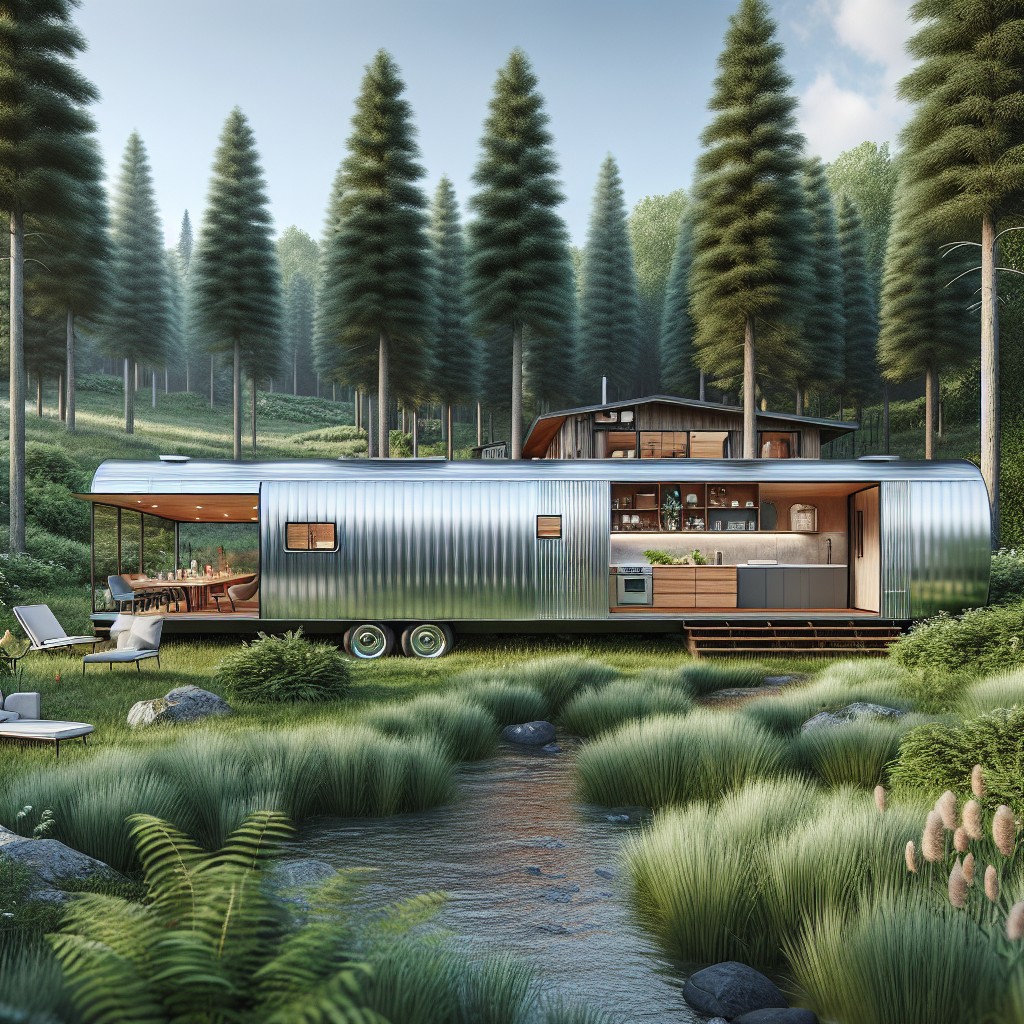
Imagine repurposing a large vehicle component into a cozy, stationary residence: that’s the essence of semi-trailer homes. These innovative dwellings are crafted from decommissioned semi-trailers, which once traversed highways hauling goods.
Now, they offer a durable shell ready for transformation into compact, efficient living spaces. Their sturdy metal frames and rectangular shape provide a unique architectural canvas, ideal for minimalistic or avant-garde designs.
Additionally, the portability of their original design allows for relocation, a feature that distinguishes them from conventional homes. Serving as a testament to the adaptive reuse of materials, semi-trailer homes embody a blend of sustainability, creativity, and versatility.
Benefits of Semi-Trailer Homes
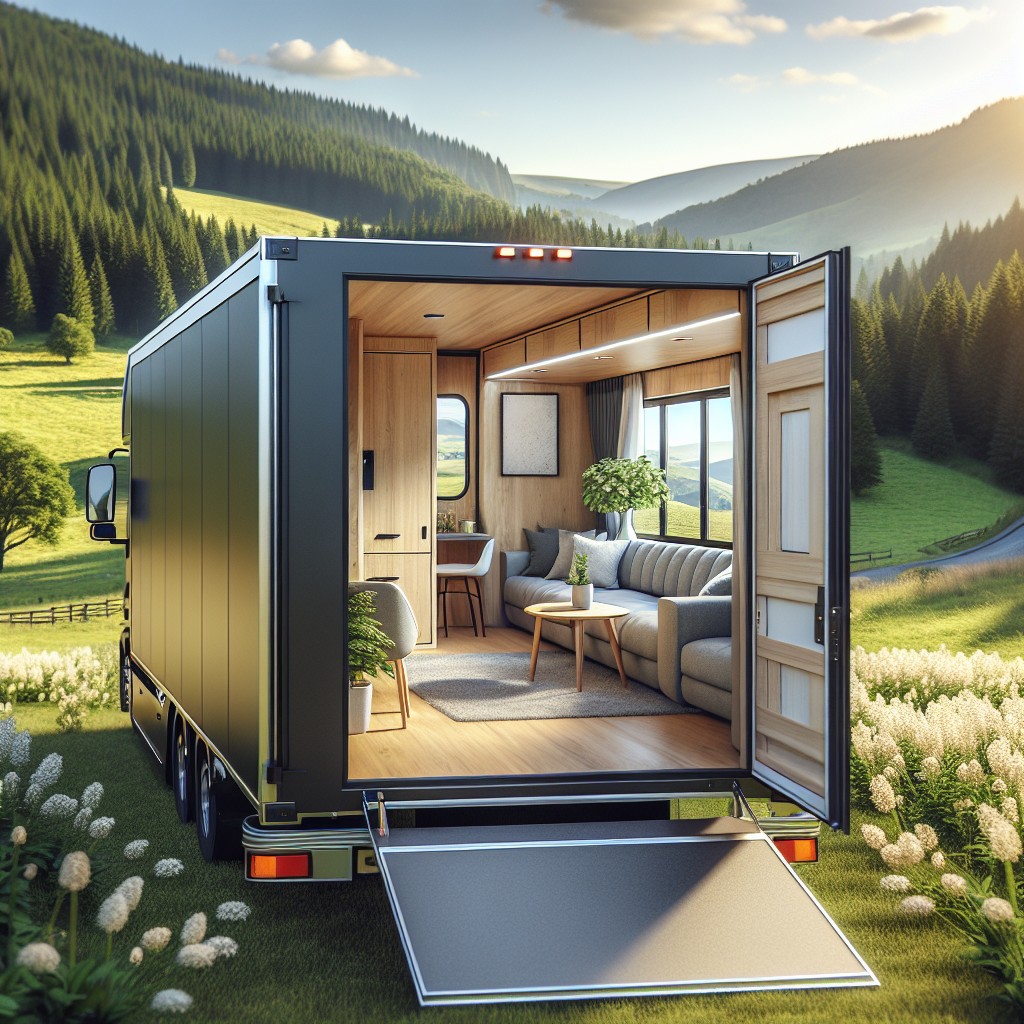
Semi-trailer homes offer a unique combination of affordability, flexibility, and sustainability. By repurposing unused transport structures, they turn potential waste into a valuable living space. Cost efficiency is a standout benefit, providing an economical alternative to traditional housing.
Mobility is another advantage, as homeowners can relocate their dwelling with relative ease, perfect for those with a nomadic lifestyle or changing job locations.
Additionally, these homes support customization to fit individual needs and aesthetic preferences, from minimalist to luxury finishes. The compact size also encourages a more simplistic lifestyle, potentially lowering the ecological footprint.
Semi-trailer homes are increasingly becoming a canvas for green technologies, including solar panels and water recycling systems, which complements the growing interest in sustainable living practices.
Design and Customization Options
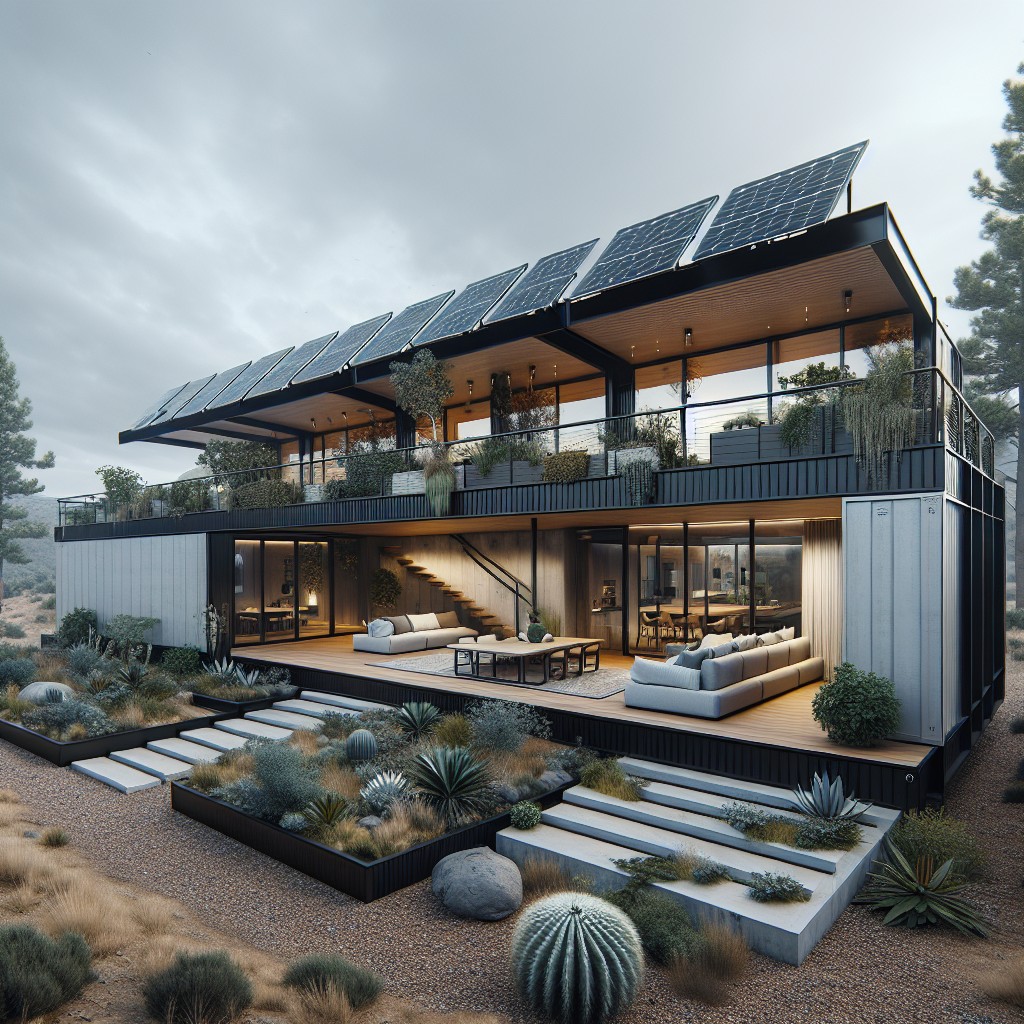
While traditional homes offer a certain degree of personalization, semi-trailer homes take customization to a new level. The linear, open-space concept inherent in a trailer’s design allows owners to partition and define their living areas creatively.
- Choice of Layout: Owners can choose open-plan layouts or section off rooms according to their needs, utilizing clever partitions, sliding doors, or even collapsible walls for flexibility.
- Interior Decor and Finishes: From minimalist modern aesthetics to rustic charm, the interior can be finished with a wide variety of materials including reclaimed wood, sustainable composites, or sleek metals.
- Exterior Modifications: The semi-trailer’s exterior can be fitted with cladding options such as wood, metal, or even living walls to blend with different environments or personal tastes.
- Ergonomic Furniture: Convertible and multi-purpose furniture is ideal for maximizing space efficiency, ensuring that every square foot is used to its full potential.
- Technological Integrations: Smart home technology can be seamlessly integrated, offering enhanced control over lighting, heating, and security.
- Light and Ventilation: Strategically placed windows, skylights, and retractable sections can be incorporated to enhance natural light and ventilation, reducing the need for artificial energy consumption.
- Custom Storage Solutions: Built-in storage tailored to specific belongings can dramatically increase the utility of the space, making tiny living more organized and enjoyable.
Each of these customization options is guided by the individual’s lifestyle, personal taste, and the practicalities of space management, yielding a home that is as unique as its inhabitant.
Zoning and Building Codes Compliance
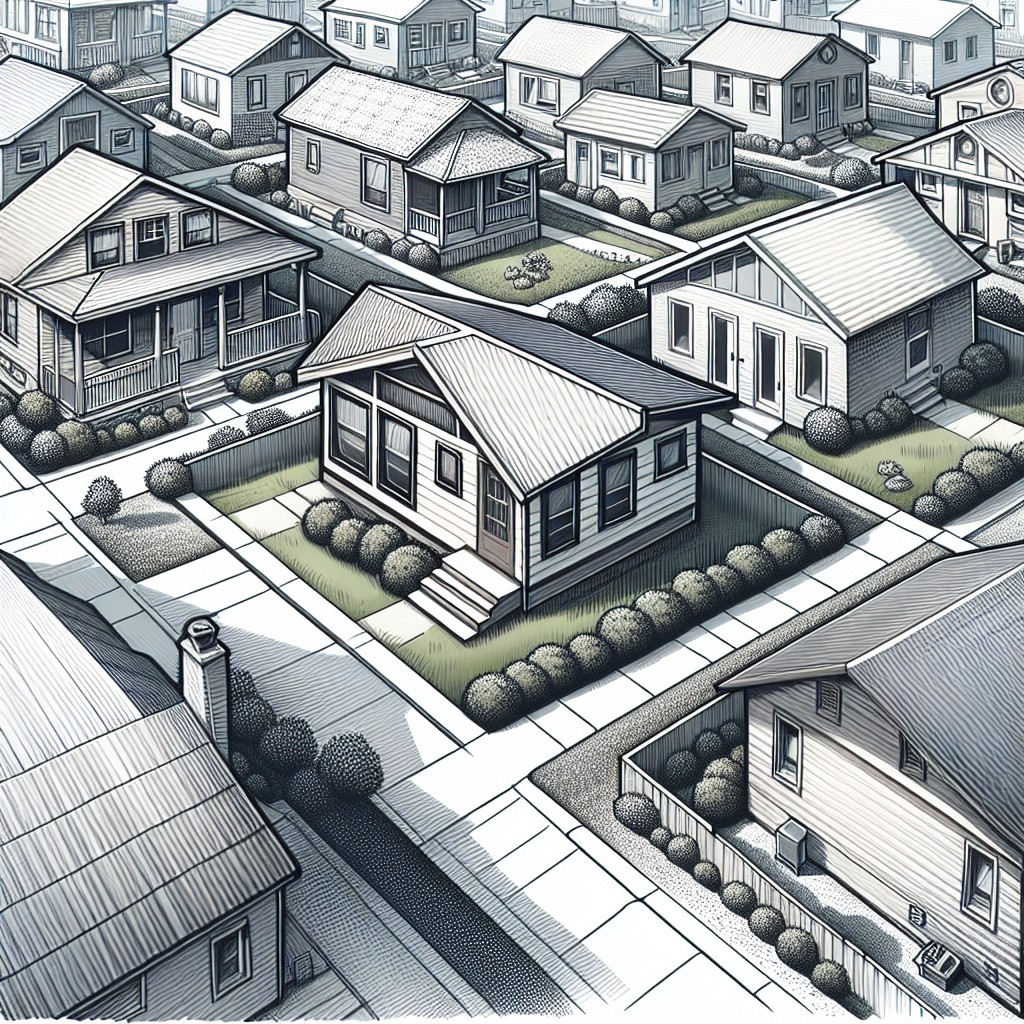
Navigating the legal landscape is crucial when establishing a semi-trailer home. Here’s what you need to consider:
1. Check Local Zoning Laws: The first step is to ensure that your intended location allows semi-trailer homes. Some areas may have restrictions on where these structures can be placed.
2. Building Code Adherence: Your semi-trailer home must meet the same building codes as any residential structure. This includes regulations on fire safety, plumbing, electrical systems, and structural integrity.
3. Permitting Process: Obtain necessary permits before converting a trailer into a dwelling. This often involves submitting design plans and proof of code compliance.
4. Utility Compliance: If you’re connecting to public utilities, local codes will dictate how to do this safely and legally.
5. Inspections: Expect periodic inspections to ensure ongoing compliance as construction progresses. Post-construction inspections are often required as well.
6. Size and Placement: Pay attention to rules regarding the footprint of your home and where on a property it can be situated. Setback requirements can impact your plans.
7. Permanent vs. Temporary Status: Determine if your home will be classified as a permanent residence or temporary. This can affect both zoning and tax implications.
8. HOA Restrictions: If in a neighborhood with a Homeowners’ Association, additional rules beyond municipal codes may apply. Ensure alignment with HOA covenants.
Remember, regulations vary widely, so local research and possibly legal consultation can save time and help avoid costly mistakes.
Sustainability Features in Semi-Trailer Homes
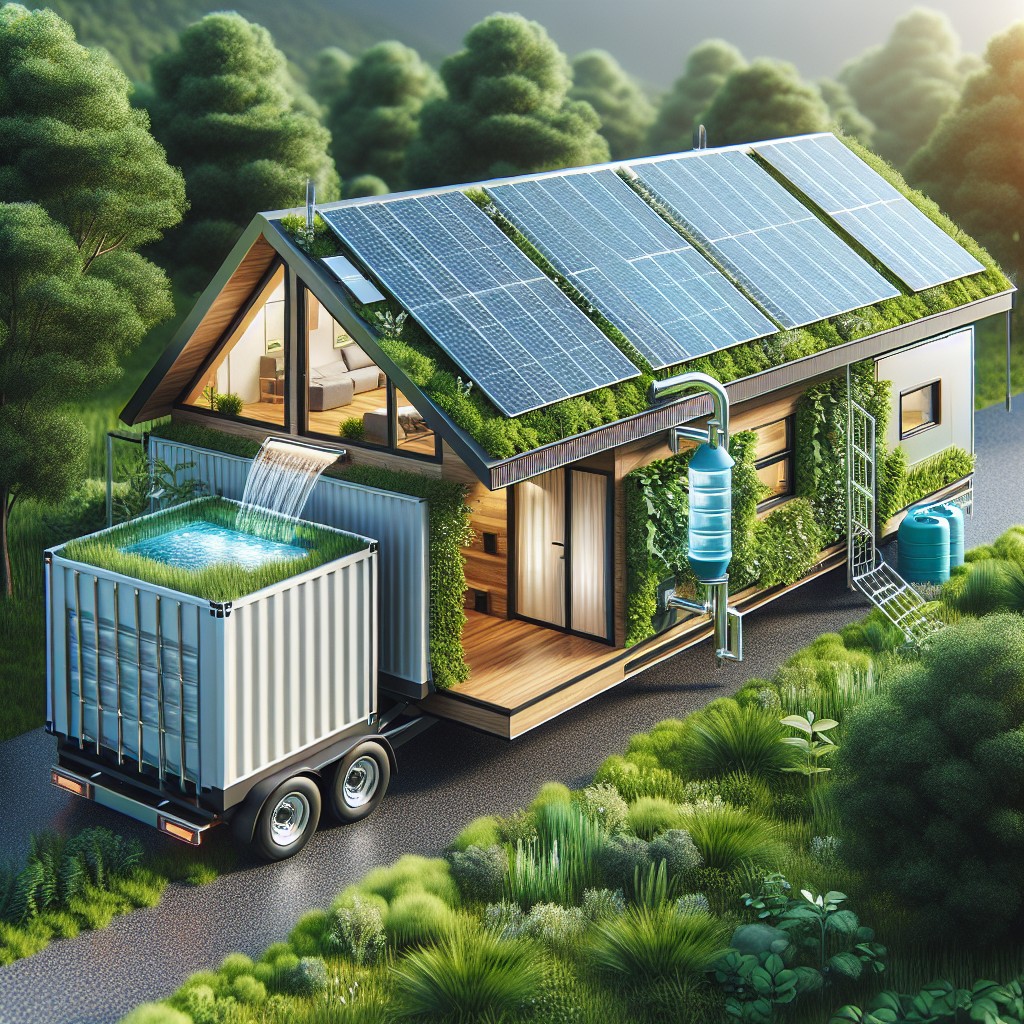
Semi-trailer homes champion eco-friendly living through innovative design and material reuse. The repurposing of retired shipping containers conserves resources and minimizes the need for new construction materials, significantly reducing the carbon footprint.
Rooftop solar panels are a common fixture, providing renewable energy and slashing utility bills. Rainwater harvesting systems can be integrated to promote water conservation, along with greywater recycling setups for irrigating landscaping.
Insulation plays a key role too; materials like spray foam create an airtight seal, enhancing energy efficiency. Moreover, double-paned windows and LED lighting fixtures are standard, further contributing to a smaller environmental impact.
In short, these homes are poster children for sustainable living, touching on energy, water, materials, and waste management.
Utility Hookups and Off-Grid Capabilities
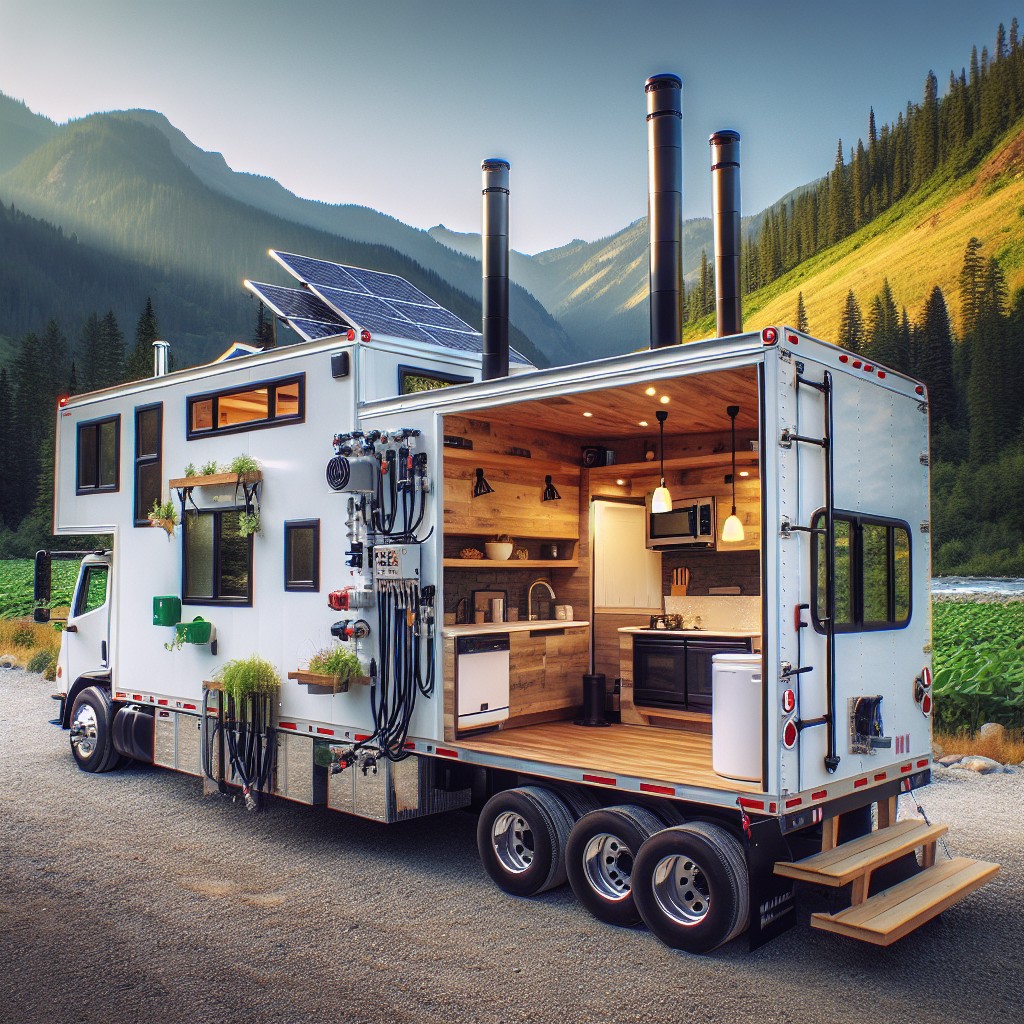
Semi-trailer homes offer the flexibility of connecting to local utilities or embracing off-grid living. Depending on the location and personal preference, homeowners can opt for traditional water, electricity, and sewage connections. To ensure a seamless integration, these homes are typically equipped with standard hookups that can be easily connected to municipal services.
For those seeking a sustainable lifestyle, these homes can be fitted with solar panels, rainwater collection systems, and composting toilets, allowing for a degree of autonomy from public utilities. Battery storage systems can store excess electricity, ensuring a constant power supply.
It’s important to factor in climate and geographical considerations when deciding on off-grid installations. An area with abundant sunshine is ideal for solar energy, for instance. Additionally, some semi-trailer homeowners include high-efficiency appliances and LED lighting to reduce energy demands, further enhancing off-grid viability.
Remember, whether you’re tapping into city services or setting up an off-grid haven, thorough planning and expert advice are key to a successful and sustainable semi-trailer home setup.
Structural Integrity and Weather Resistance

Semi-trailer homes, with their original intent to haul heavy cargo over long distances, are built with robust materials capable of withstanding the rigors of the road. This inherent strength directly translates to notable durability when these structures are repurposed as homes.
Key points to understand regarding the structural integrity and weather resistance of semi-trailer homes include:
- Reinforced Construction: The steel frame and chassis provide a solid foundation, enabling the home to resist structural stress.
- Weatherproofing: Original trailers are designed to protect goods from the elements. Reinforced seals and weather-resistant coatings are applied to ensure the interior remains dry and insulated.
- Wind Resistance: Their aerodynamic shape and sturdy build give these homes an advantage in high wind situations like storms or gusty regions.
- Insulation: Upgraded insulation materials can further enhance climate control, maintaining comfortable temperatures inside during extreme weather.
- Elevated Foundation: Trailers are often placed on raised platforms, minimizing flood risk and enhancing under-home ventilation.
- Longevity: High-quality metal exteriors ward off damage from sunlight, rain, and snow, ensuring a longer lifespan with less maintenance.
Understanding these attributes demonstrates how semi-trailer homes offer a reliable and weather-resistant housing option. They embody resilience, a core appeal for those seeking a sustainable and robust living space.
Cost Comparison With Traditional and Modular Homes
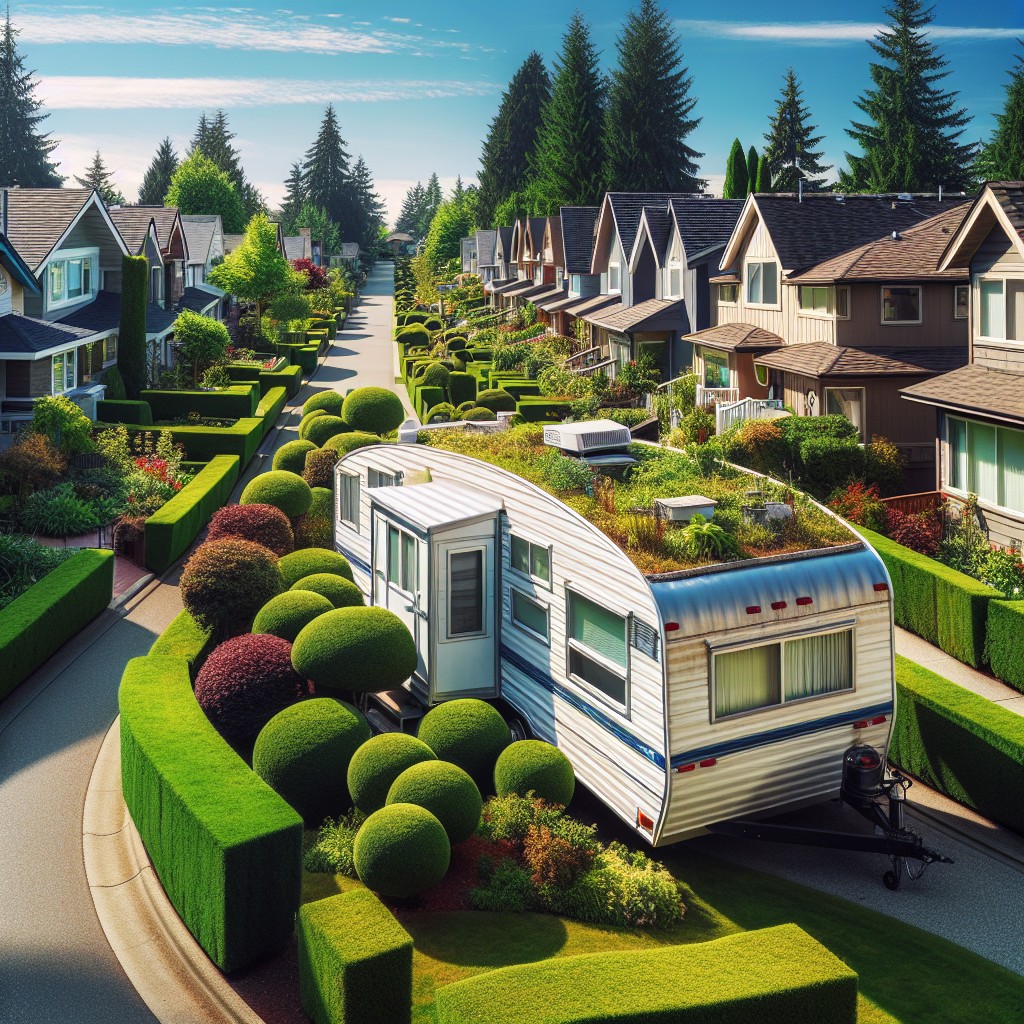
When assessing affordability, semi-trailer homes often present a less expensive alternative to both traditional stick-built houses and modular homes. Their cost-effectiveness stems from several factors:
- Lower Initial Purchase Price: Used semi-trailers are relatively cheap to acquire, slashing the primary investment required.
- Reduced Labor Costs: The conversion of trailers into livable spaces can be less labor-intensive, especially if much of the work is DIY.
- Minimal Site Preparation: Semi-trailer homes typically need less extensive foundation work compared to traditional homes, which require significant excavation, grading, and concrete work.
- Material Savings: Reusing a trailer reduces the need for new construction materials, thereby cutting costs and environmental impact.
- Potential for Incremental Investment: Owners can gradually invest in their semi-trailer home, spreading out expenses as their budget allows.
However, it’s important to note that customization and high-end finishes can drive up the price, and the costs to ensure proper insulation, plumbing, and electrical work must also be considered. Additionally, the scale of the project and location-specific factors like labor rates and material costs will influence the overall price tag.
Interior Space Maximization Techniques
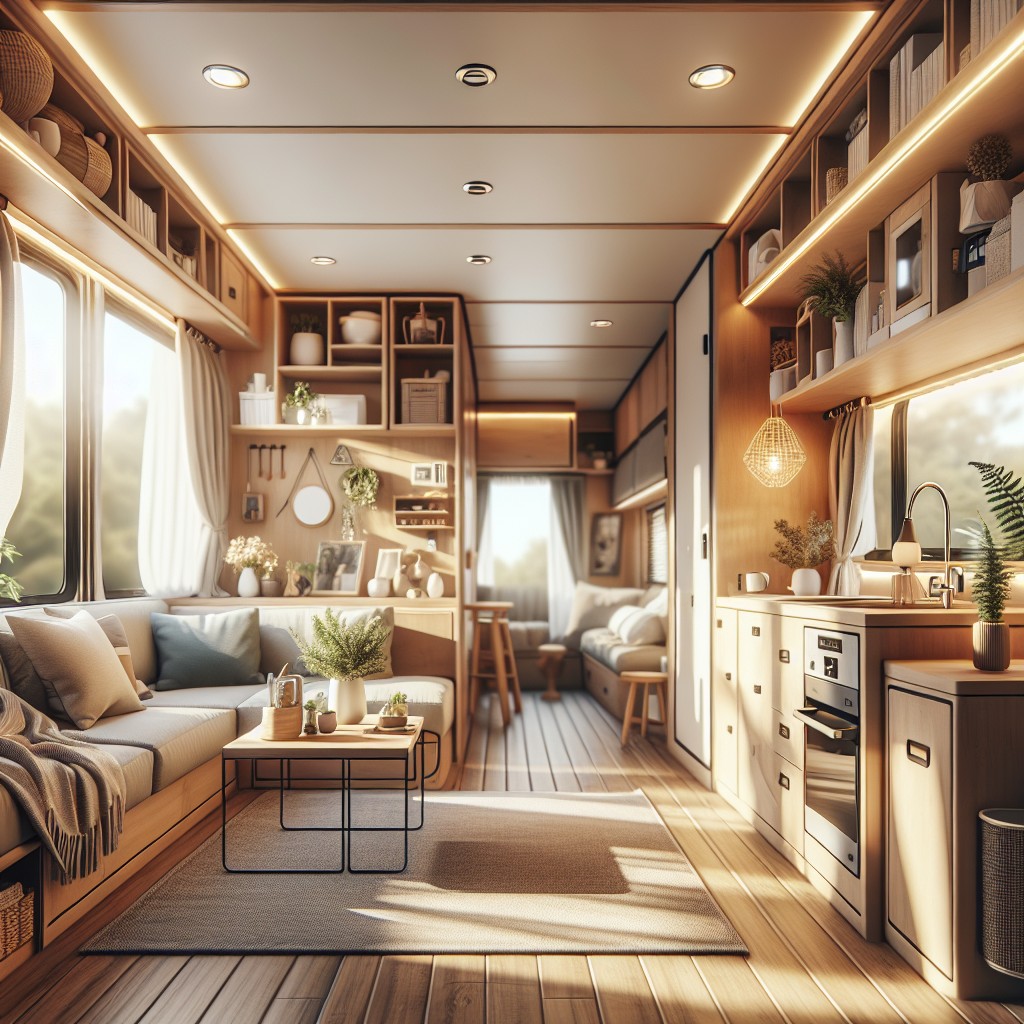
Maximizing the interior space of a semi-trailer home requires creative and efficient design strategies:
- Multi-functional Furniture: Invest in pieces that serve double duty, such as sofa beds or tables that convert to desks, to make the most of limited square footage.
- Built-Ins and Custom Cabinetry: Utilize built-in storage solutions that conform to the unique dimensions of the trailer. Cabinets and shelves can be tailored to fit snugly into corners and under-counters, freeing up valuable floor space.
- Vertical Space Utilization: Take advantage of the height within the trailer by installing high shelves or lofted sleeping areas. This can keep the main floor uncluttered.
- Light Colors and Mirrors: Use light paint colors and strategically placed mirrors to create the illusion of a larger space, as they reflect natural light throughout the interior.
- Convertible Spaces: Design areas that can easily be transformed for various uses, such as a dining area that becomes a workspace or a living room that hosts overnight guests.
- Sliding Doors: Replace traditional swing doors with sliding doors or pocket doors to eliminate the space needed for door clearance, thus gaining more usable floor area.
Each of these techniques can effectively make a semi-trailer home feel spacious and uncluttered, ensuring that every inch of the living area is put to good use.
Mobility and Transport Considerations
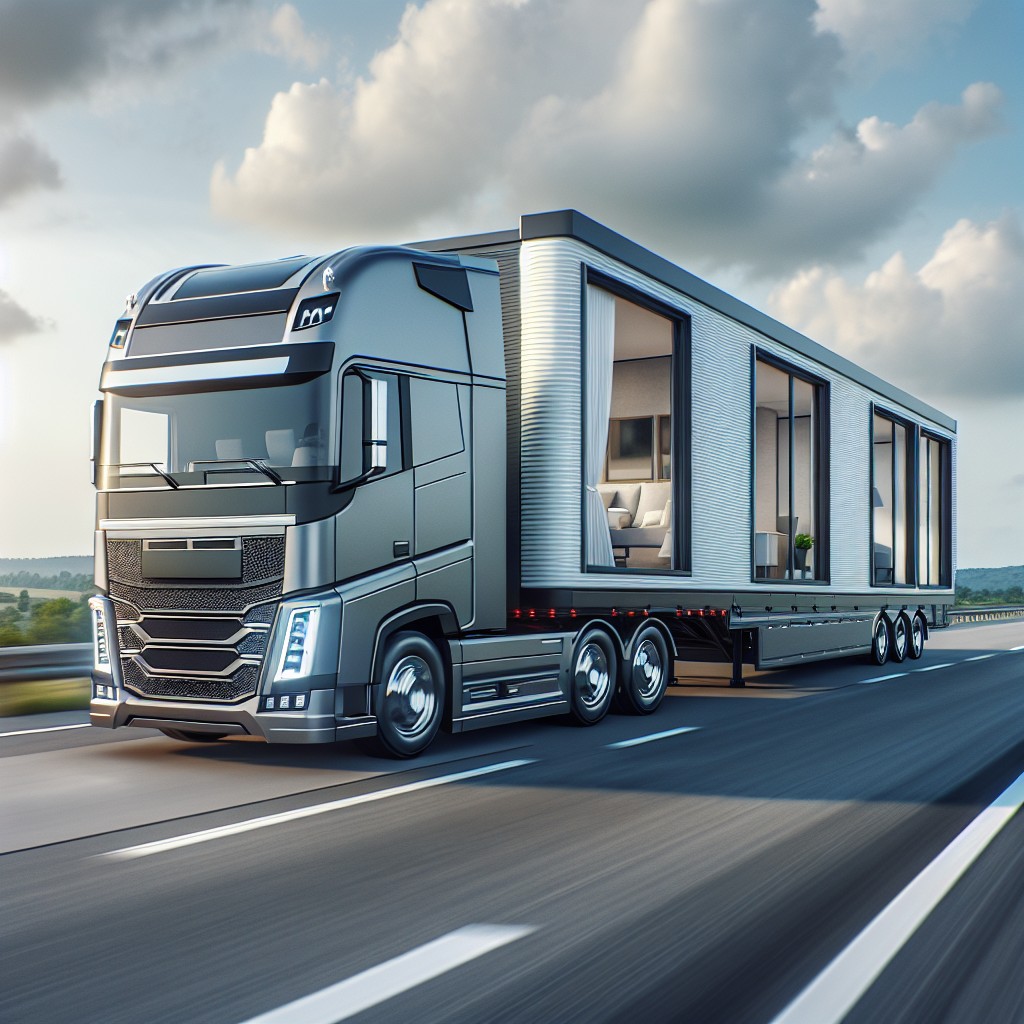
Moving a semi-trailer home requires careful planning. You’ll need to ensure:
- Permits: Check with local authorities for necessary transportation permits as regulations vary by region.
- Tow Vehicle: A heavy-duty truck with ample towing capacity is essential for safe transport.
- Route Planning: Create a route that accommodates the size of your semi-trailer and avoids low bridges or weight-restricted roads.
- Professional Assistance: Hire experienced movers specializing in oversized loads to navigate challenges.
- Site Preparation: Before arrival, your new location should be prepped for installation with proper foundation and utility hookups.
- Insurance: Ensure your home is covered for any damages during the move.
- Weather Considerations: Plan your move during favorable weather to avoid delays or hazards.
- Timing: Allow for flexibility in your schedule as moves of this scale can often take longer than expected.
By attending to these factors, you’ll ensure your semi-trailer home transitions smoothly to its new setting.
Case Studies of Semi-Trailer Home Dwellers
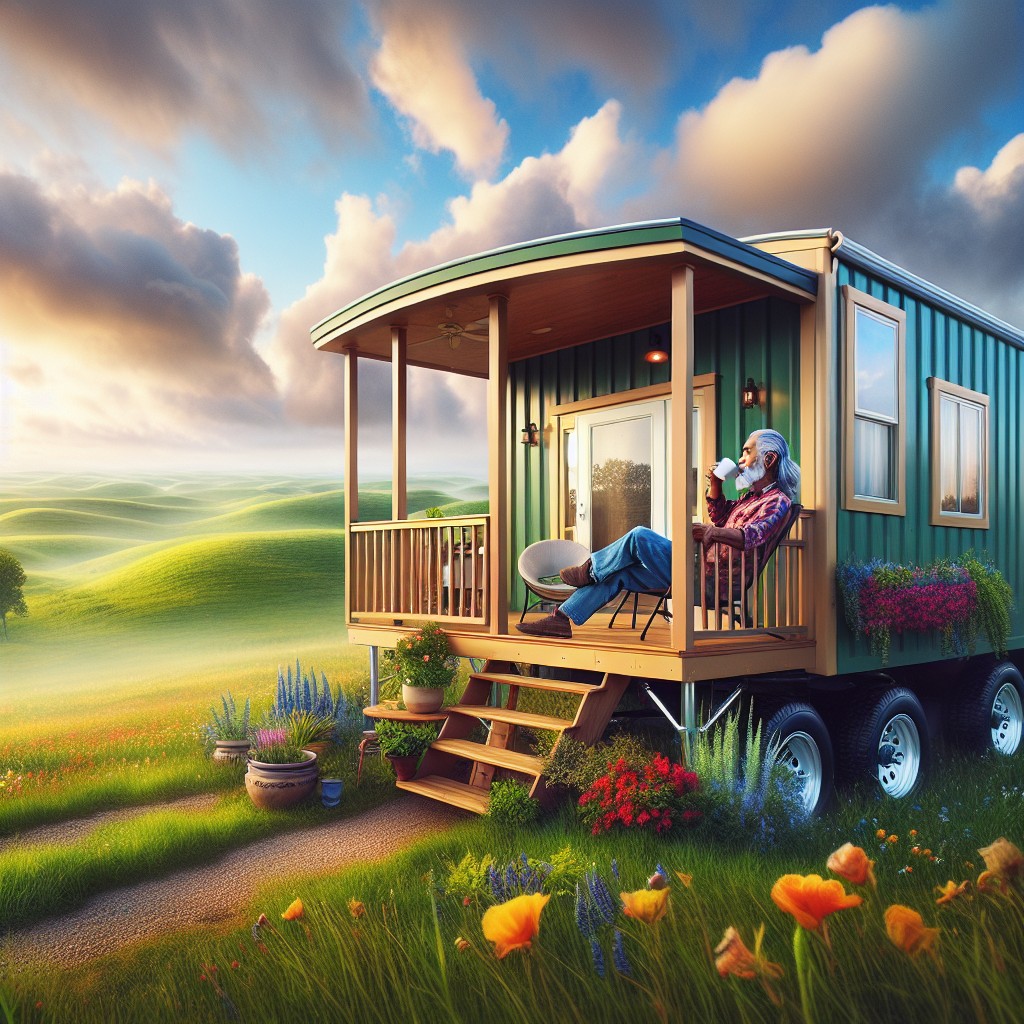
Real-world examples bring the concept of semi-trailer homes to life, showcasing the diversity and ingenuity of this lifestyle.
In Austin, Texas, a couple transformed a 53-foot trailer into a solar-powered abode with a roof deck, emphasizing independence and eco-friendliness.
Meanwhile, in the Pacific Northwest, a software developer opted for a semi-trailer conversion to minimize living costs, allowing for a debt-free journey and the pursuit of personal passions.
Across the pond, a Dutch designer created a sleek, expandable living space within a trailer, pushing the envelope in modern, minimalist design.
Her project highlights the potential for high-end aesthetics in compact living.
Closer to home, a community development in Utah utilizes multiple trailers to offer affordable, yet stylish housing solutions to the local workforce, demonstrating the versatility and broader social impact of semi-trailer homes.
These snapshots not only inspire but also serve as practical models for how space, cost, and sustainability can be addressed innovatively within the confines of repurposed semi-trailers.
Community and Social Aspects of Semi-Trailer Living
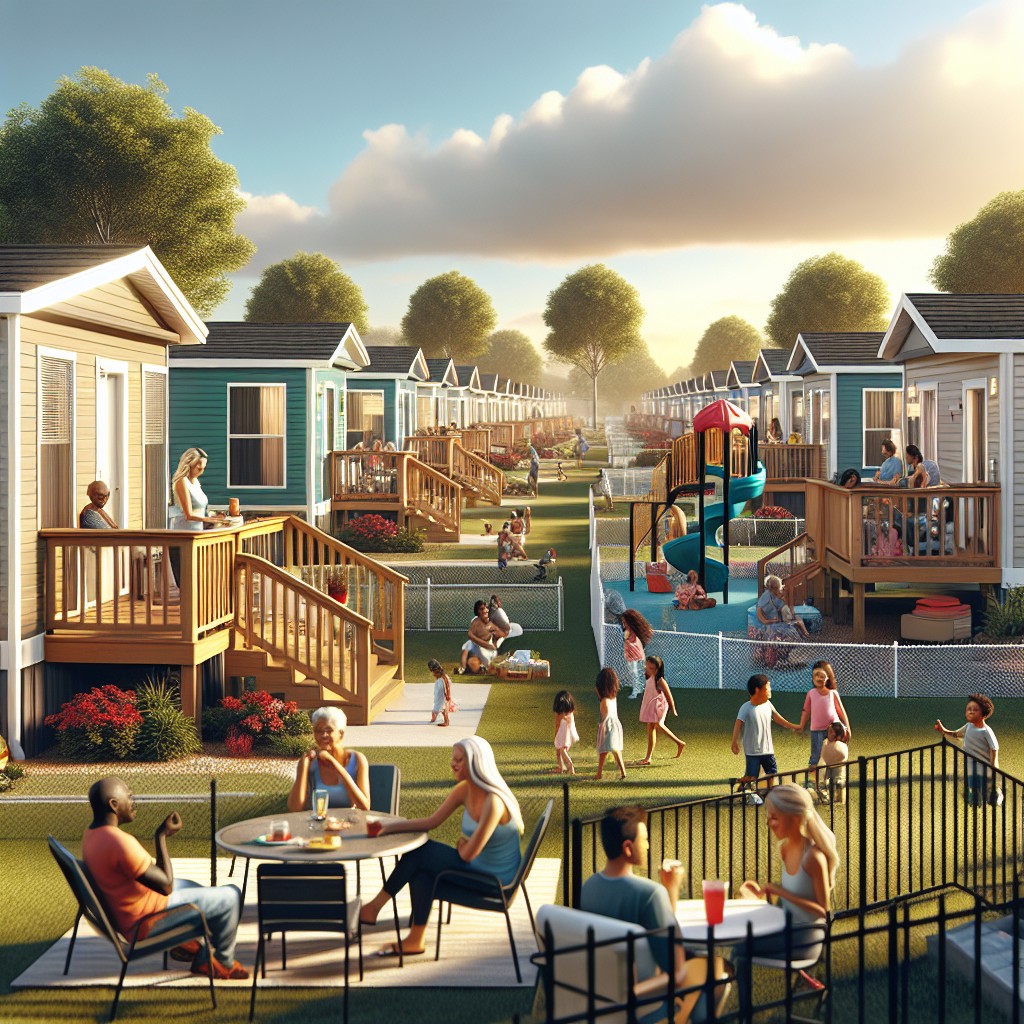
Semi-trailer homes offer a unique blend of privacy and communal interaction. Their mobility allows residents to choose their neighbors and communities, often leading to close-knit groups with shared interests.
Here are some points to consider:
- Networking Opportunities: Clusters of semi-trailer homes often attract like-minded individuals, fostering networking for personal and professional growth.
- Support Systems: They can create strong support systems where inhabitants share skills, resources, and communal spaces, enhancing the sense of belonging.
- Events and Gatherings: Many semi-trailer communities host events, from BBQs to workshops, which fortify community bonds.
- Shared Amenities: Access to shared amenities like laundrettes, gardens, and recreational areas enhances the living experience while encouraging social interaction.
- Sustainability Engagement: Those with an environmental focus often engage collectively in sustainable practices, forming groups for community gardens or solar energy projects.
Embracing semi-trailer living doesn’t mean forsaking a social life; for many, it enriches it.
Financing and Insurance for Semi-Trailer Homes
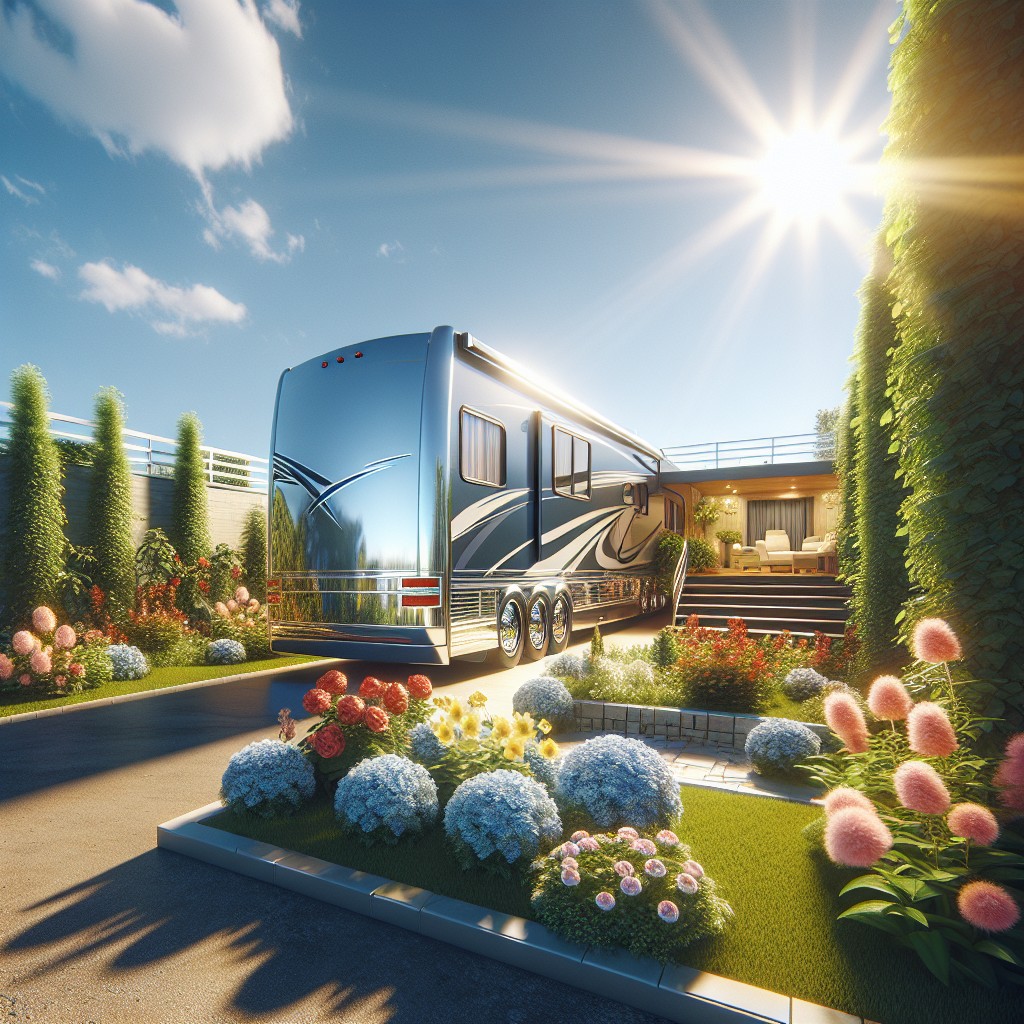
Navigating the financial aspects of semi-trailer home ownership can be different from traditional home financing. Here are some key points to keep in mind:
1. Specialized Lenders: Seek out financial institutions that specialize in loans for non-traditional housing, including RVs and mobile homes, as they are more likely to provide financing for semi-trailer homes.
2. Loan Classification: Your semi-trailer home may qualify either as personal property or real estate, affecting the type of loan you might get. If it’s fixed to a permanent foundation, it might qualify for a traditional mortgage; otherwise, a chattel loan might be your route.
3. Down Payments: Be prepared for potentially higher down payment requirements compared to standard mortgages, as lenders often view these homes as higher risk.
4. Insurance Coverage: You’ll need to find an insurance provider that covers mobile or tiny homes on wheels. Coverage might be more akin to auto insurance in some respects and homeowners’ in others.
5. Insurance Rates: Factors like the mobility of the home, its location, and how it’s anchored can all affect insurance rates. Be sure to consult with insurance agents who understand the unique nature of semi-trailer homes.
Ensure you gather multiple quotes for both loans and insurance to find the most competitive rates and terms that suit your specific situation.
Market Trends for Semi-Trailer Homes
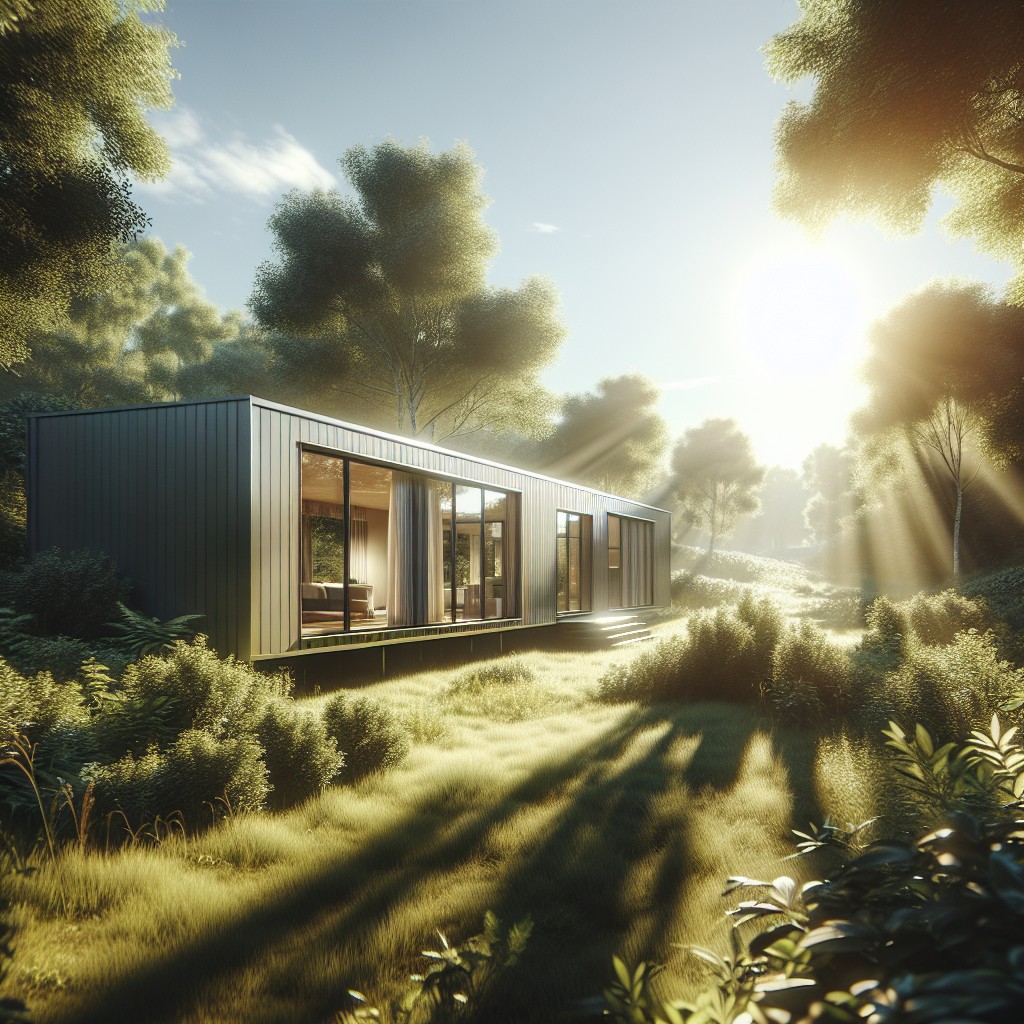
As housing demands evolve, the popularity of semi-trailer homes is rising, driven by factors such as affordability, interest in minimalist living, and the desire for mobility. The tiny house movement, which emphasizes downsizing and simple living, has contributed to an increased interest in alternative housing structures, including semi-trailers.
On social media, they’re celebrated for their innovative designs and sustainable living potential, influencing market trends as more people seek unique, eco-friendly housing solutions. With the rise of the gig economy and remote work, the ability to live and work from any location has made semi-trailer homes an attractive option for digital nomads.
The market has seen a diversification of suppliers, from DIY kits to custom-build services, catering to a range of customers from budget-conscious individuals to those seeking luxury dwellings. In line with this, there has been an uptick in workshops and online resources to support aspiring semi-trailer homeowners through the conversion process.
The interest in green technology integration is also shaping market trends, with advancements in solar panels, composting toilets, and rainwater harvesting systems becoming progressively integrated into semi-trailer home designs.
However, the regulatory environment remains a challenge, with varying standards and codes across regions, which influences both the market growth and the resale value of these homes. As regulations adapt to accommodate non-traditional housing, the market for semi-trailer homes is expected to become more accessible and standardized.
Challenges and Considerations for Semi-Trailer Home Living
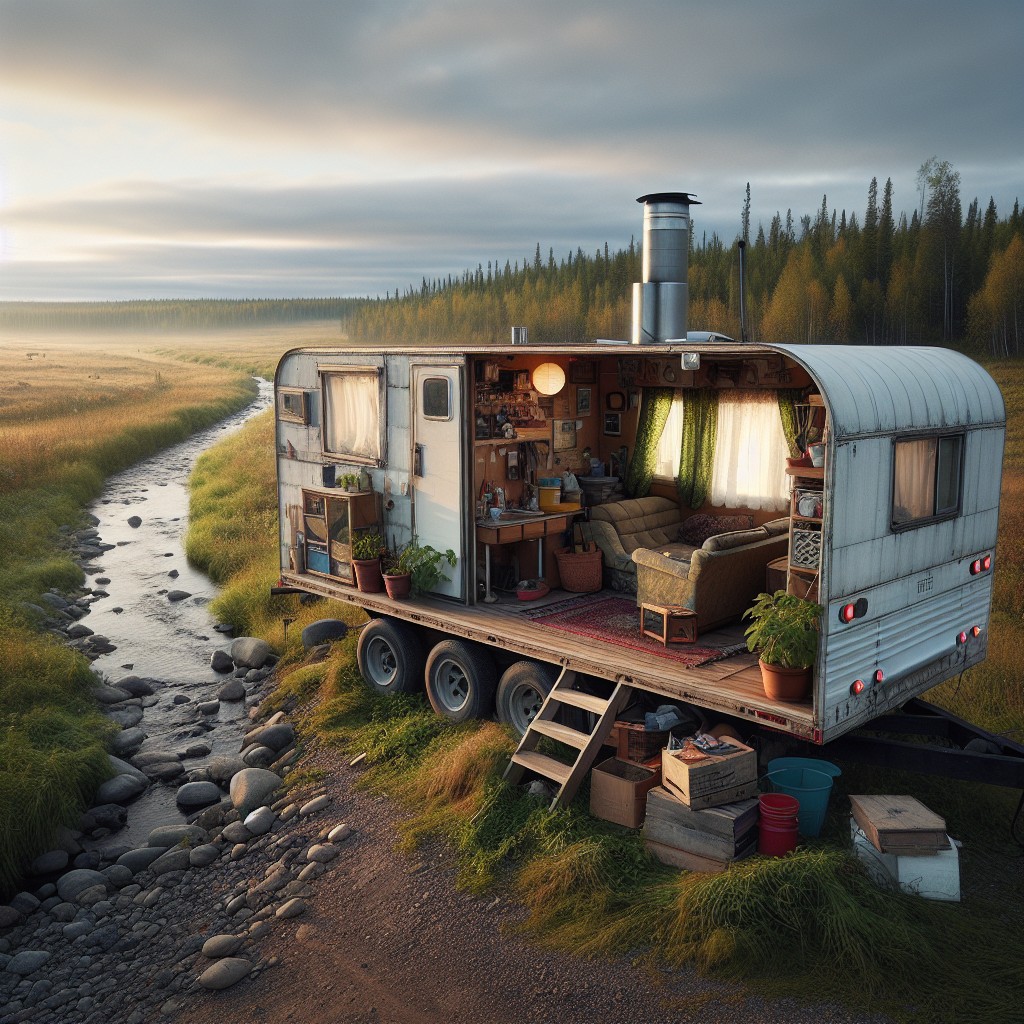
While the unique appeal of semi-trailer homes is undeniable, prospective residents should be aware of certain challenges:
1. Permitting and Regulation: Navigating local zoning laws can be complex, as not all areas classify semi-trailers as residential dwellings. Research and compliance are essential.
2. Space Limitations: The narrow shape may restrict layout options. Smart design is key to creating a comfortable, functional space.
3. Climate Control: Insulation and ventilation can be problematic. Proper modifications are necessary to ensure a livable interior climate.
4. Financing Hurdles: Obtaining a mortgage for a non-traditional home can be difficult, making sourcing funds for purchase or build-out a challenge.
5. Resale Value: Unlike conventional homes, semi-trailer homes may not appreciate as much over time, which can affect long-term financial planning.
6. Community Response: Semi-trailer homes sometimes face stigma, potentially leading to friction with neighbors or community members.
FAQ
What are semi-trailers called?
Semi-trailers are commonly known as "semis", "semitrailers", "tractor-trailers", "big rigs", "semi-trucks", "eighteen-wheelers", or "semi-tractor-trailers", particularly in North America.
What is the difference between a semi-truck and a semi-trailer?
The primary difference lies in the fact that a semi-truck, also known as an 18-wheeler or tractor-trailer, refers to the combined entity of a tractor that contains the engine and a detachable trailer for cargo, while a semi-trailer specifically refers to the detachable part of this combined entity that carries the cargo.
How much does a 18-wheeler truck weigh?
An 18-wheeler truck weighs 35,000 pounds when empty and can reach up to 80,000 pounds when fully loaded.
What is a semi with 2 trailers called?
A semi with 2 trailers is referred to as a B-double in Australian English or a tandem tractor-trailer, tandem rig, or double in American English.
What materials are used in the construction of semi-trailer homes?
Semi-trailer homes are typically constructed using lightweight, durable materials like steel, aluminum, wood, and fibreglass.
How do semi-trailer homes contribute to sustainable living?
Semi-trailer homes contribute to sustainable living by repurposing unused vehicles, thus reducing waste, and using less space and resources compared to traditional homes.
How much does a standard semi-trailer home cost?
The cost of a standard semi-trailer home typically ranges from $10,000 to $50,000.
Table of Contents




